1 December 2023: Platinum’s consecutive market deficits could deepen as lower PGM prices increase mine supply risks. The >40% decline in the Platinum Group Metals (PGMs) basket price over the last twelve months has materially undermined the economic sustainability of a significant portion of platinum mining supply. WPIC estimates around 25% of PGM mine production is generating negative margins. Should efforts to stem loss-making production result in production being suspended or closed, they will compound projected platinum market deficits, which are forecast to average 8% of demand between 2023f to 2027f, before capacity rationalisation. The combination of largely inelastic demand and risks to uneconomic supply being curtailed have the potential to exacerbate deficits and tighten market conditions, enhancing the investment case for platinum.
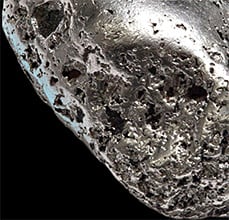
Platinum Essentials
Platinum is the world’s most precious metal.
Now more accessible and attractive to investors than ever beforeTrevor Raymond, CEO,
World Platinum Investment Council


1 September 2023: Palladium’s five-year supply/demand outlook and its role in liberating platinum for the hydrogen economy. This report introduces WPIC’s five-year palladium outlook, supplementing our platinum projections to 2027. We forecast palladium deficits in 2023 and 2024 before increasing recycling supply and flat demand move palladium into surpluses from 2025. In contrast, we expect multi-year deficits for platinum from 2023. We expect ongoing platinum for palladium substitution in automotive end uses to reverse from 2025, supporting palladium demand and freeing up platinum for the hydrogen economy.
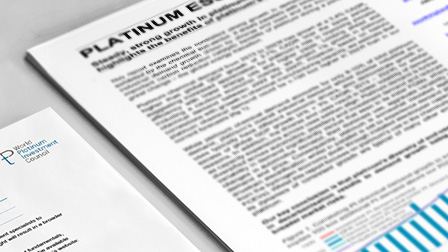
1 August 2023: Steady, strong growth in platinum chemical demand highlights the benefits of platinum’s diversity of end uses. This report examines the consistent growth in demand for platinum exhibited by the chemical sub-sector. Platinum chemical demand growth has outpaced global GDP growth suggesting increased appreciation for platinum’s role in improving process efficiency with lower energy use and higher yields. Parallels are drawn with broader platinum industrial demand (also outpacing GDP growth) which highlight benefits of having demand sources with different economic drivers. Reflecting on the diverse industrial end uses along with automotive, jewellery and investment demand, platinum demand is considered less variable than its sister metals. Accordingly, platinum is better insulated from broader market risks such as the electrification of the drivetrain while also being set to benefit from the hydrogen economy.
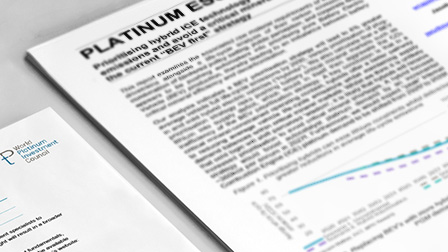
1 July 2023: Prioritising hybrid ICE technology would minimise life cycle CO2 emissions and avoid a critical minerals shortage, versus the current “BEV first” strategy. This reports presents a scenario analysis of the evolution of the drivetrain and the associated critical mineral demand. Automaker prioritisation of pure Battery Electric Vehicle (BEV) production, will engender an imbalance between battery critical mineral efficiency and decarbonisation. A key conclusion is that in a critical mineral-constrained operating context, likely leading to a lithium shortage, versus BEVs, hybrids offer a better pathway to reducing average vehicle life-cycle emissions whilst maintaining supply demand balances within critical mineral markets.

1 July 2022: Higher substitution and loadings more than offset vehicle production risks to platinum automotive demand. We address valid investor concerns about the potential negative impact on demand for new vehicles from supply chain challenges and eroded consumer purchasing power – due to slowing GDP growth combined with significant inflation, negative 271 koz combined – but demonstrate that these are more than offset by potentially increased demand from higher platinum substitution for palladium (positive 512 to 853 koz), and higher loadings per vehicle in China (up to positive 1,300 koz ). Hence, risks are biased towards a reduced or completely eliminated surplus in 2022 and substantially increased deficits thereafter.
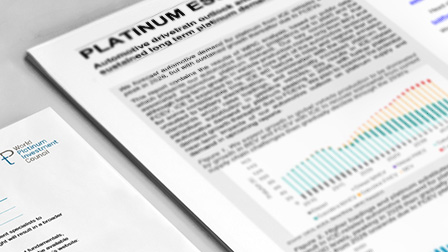
1 June 2022: Automotive drivetrain outlook and the implications for sustained long term platinum demand. This report contains the results of WPIC analysis, based on public data, which presents our automotive drivetrain projections out to 2040 and the associated automotive platinum demand. Our key conclusion is that although long-term growth in vehicle production comes only from BEV and FCEV, the internal combustion engine (ICE) is expected to remain a core part of the automotive landscape for some considerable time. ICE will feature in roles and regions that are unsuited to battery electrification. In combination with the latest emission standards which raise loadings, and especially increased platinum for palladium substitution in gasoline vehicles, this results in ICE-related automotive demand for platinum peaking in 2028 at 25% above current levels, with further platinum demand growth thereafter due to FCEVs.
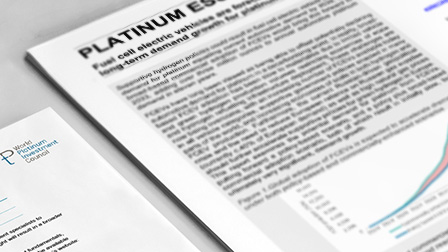
15 March 2022: Fuel cell electric vehicles are forecast to be a key driver of material long-term demand growth for platinum. All technologies are needed to decarbonise transport; we see fuel cells as complimentary to battery electric vehicles with the potential to play an important role in uses less well suited to battery electrification, particularly in the heavy-duty segment. Automotive fuel cells use platinum catalysts to convert hydrogen gas as fuel and oxygen from the atmosphere into water while generating electricity. Supportive hydrogen policies could result in fuel cell electric vehicle (FCEV) demand for platinum equalling current automotive demand by 2039, but broad-based commercial adoption of FCEVs would bring this forward to 2033, adding over three million ounces to annual automotive platinum demand in ten years.
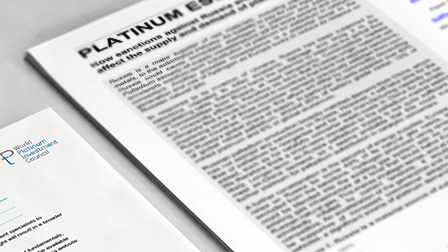
1 March 2022: How sanctions against Russia and Russian entities might affect the supply and demand of platinum group metals. Sanctions inflicted upon Russia in response to its invasion of Ukraine are having a significant impact on the business activities of Russian companies. Russia is a major supplier of raw materials, including platinum group metals, to the automotive industry. Restrictions on payments could cause immediate shortages in platinum and palladium. Palladium security-of-supply considerations will be more severe and could accelerate medium-term substitution of platinum for palladium in catalytic converters. Another possible consequence is a potential boost to the generation and use of hydrogen as Europe looks to reduce its reliance on Russian natural gas. This would support increased commercial adoption of fuel cell electric vehicles, a significant source of platinum demand in the future.
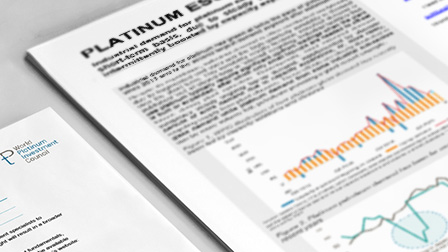
1 January 2022: Industrial demand for platinum can be highly variable on a short-term basis, due to steady top-up demand being intermittently boosted by capacity expansion demand. Industrial demand for platinum has grown at twice the pace of global GDP since 2013 and since 2020 has been second largest demand segment after automotive. Despite its importance, industrial demand is often overlooked analytically due to fragmented end uses and the high variability in published demand over the short term. This report highlights that the variability in industrial demand for platinum is a result of industrial demand being published ‘net’ of closed-loop or ‘internal’ recycling. Industrial facilities that use platinum typically require significant up-front loadings when a plant is built or expanded, after which only small top-ups are needed to off-set losses during plant operation. Consequently, most industrial demand comprises steady on-going top-up demand, supplemented by staccato periods of extra demand due to capacity expansions, or, more rarely, recycling supply from the closure of facilities.
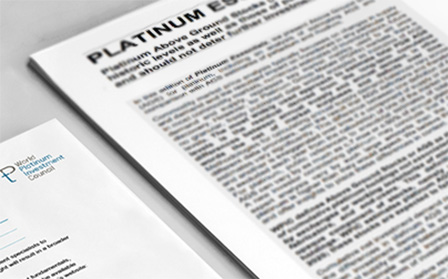
1 February 2021: Platinum Above Ground Stocks (AGS) are low relative to historic levels as well as those of palladium and rhodium and should not deter further investment in platinum. In this edition of Platinum Essentials, we present Above Ground Stocks (AGS) for platinum, including an analysis of estimating AGS and a comparison with AGS estimates of palladium and rhodium. AGS are a natural part of physical metal markets. However, methodologies for calculating annual supply demand balances vary across different data providers, with the result that AGS definitions and therefore estimates can vary significantly. In comparison to other PGMs, platinum AGS appear relatively benign compared to current and potential future annual platinum demand.
